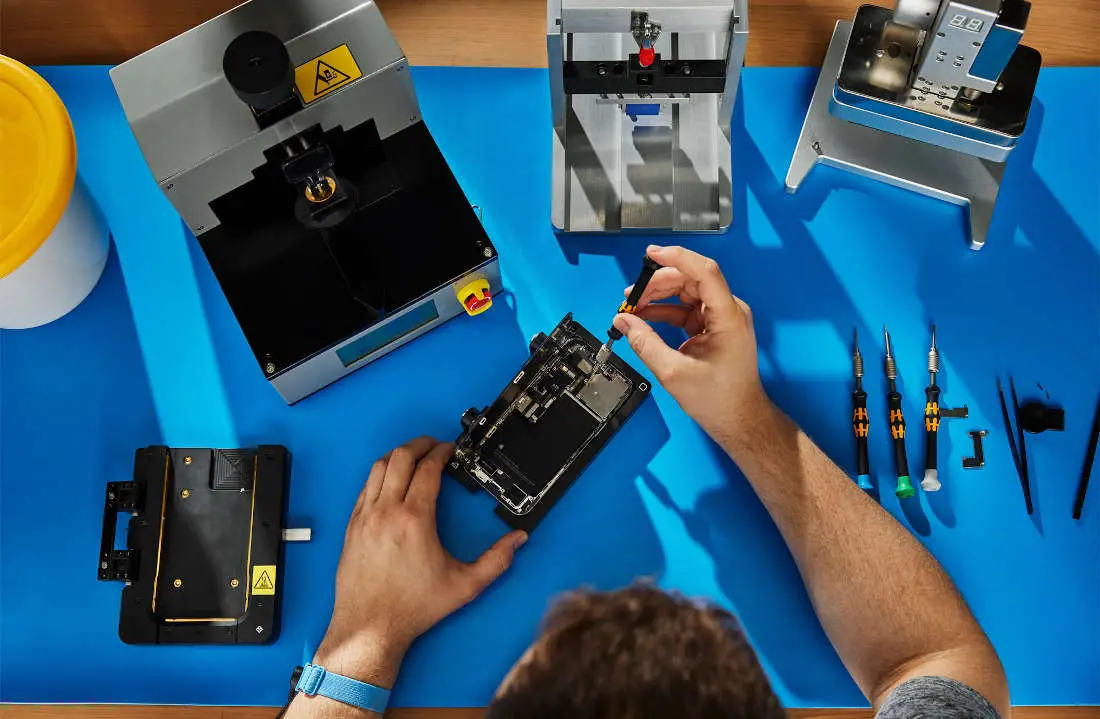
Apple’s Self Service Repair program is an initiative launched in April 2022 that allows customers to repair certain Apple devices themselves, rather than relying solely on Apple or authorized service providers. Under the program customers can purchase genuine Apple parts, tools, and repair manuals to fix certain common issues with their iPhones and MacBooks themselves. This program is currently in its early stages and only available in a limited number of countries, but it represents a significant shift in Apple’s traditionally closed-loop repair system.
SEE ALSO:
- Fix Duplicates in Apple Music
- This spectacular Apple Watch Series X concept even has a camera for FaceTime
- How to Recover an iPhone Turned On but with the Black Screen
Who is it for?
The program is primarily aimed at individuals with the knowledge and experience to repair electronic devices. Apple emphasizes that it is not intended for the average consumer and recommends that customers who are not comfortable with repairs take their devices to an authorized Apple service provider.
What devices can you repair under Apple’s self-repair?
Apple’s Self Service Repair program allows you to repair certain components of the following devices:
iPhones
- iPhone 12 and later models (including Pro and Max variants)
MacBooks:
- MacBooks with Apple silicon chips, including:
- MacBook Air (M1, M2)
- MacBook Pro (13-inch M1, M2, 14-inch, 16-inch)
- Mac mini (M1, M2)
- Mac Studio
Repairable Components
iPhone
- Display
- Battery
- Camera
- Speaker modules
MacBooks
- Display
- Battery
- Trackpad
- Keyboard
It’s important to note that the program is still evolving, and Apple might expand the list of eligible devices and components in the future. You can stay updated on the latest information through Apple’s Self Service Repair website: https://support.apple.com/self-service-repair
Benefits of Apple’s self-repair?
There are several potential benefits to the Self Service Repair program:
- Cost savings: Repairing your device yourself can be significantly cheaper than taking it to an authorized service provider.
- Convenience: You can repair your device at your own pace and on your own schedule.
- Environmental impact: Repairing devices instead of replacing them can help reduce electronic waste.
What are the challenges?
There are also some challenges to consider:
- Availability: The program is currently limited in scope and availability.
- Complexity: Repairing electronic devices can be complex and require specialized skills and tools.
- Safety: There is a risk of damaging your device if you are not careful.
How does Apple’s self-repair program work?
- Visit the Self Service Repair Store: You can browse the available parts, tools, and repair manuals on the Apple Self Service Repair Store website. Opens in a new window www.apple.com Apple Self Service Repair Store
- Purchase the necessary parts and tools: Once you’ve chosen the parts and tools you need, you can purchase them directly from Apple.
- Download the repair manual: The repair manual provides step-by-step instructions for completing the repair.
- Repair your device: Follow the instructions in the repair manual carefully to repair your device.
- Return your used parts (optional): You can return your used parts to Apple for recycling.
Before attempting any self-repair, remember:
- Apple recommends this program only for individuals with experience repairing electronic devices.
- Repairing devices can be complex and require specialized tools and skills.
- There is a risk of damaging your device if not done correctly.
If you’re unsure about self-repair, it’s always best to consult an authorized Apple service provider.
Overall, Apple’s Self Service Repair program is a welcome step towards giving customers more control over their devices and repairs. However, it’s important to weigh the benefits and drawbacks before deciding whether to repair your own device.
Sources:
- Apple’s Self Service Repair website: https://support.apple.com/self-service-repair
- Apple’s Support page on Self Service Repair: https://support.apple.com/self-service-repair
- A video overview of the program: https://m.youtube.com/watch?v=mdYzVaC6HSQ
RELATED:



Comments